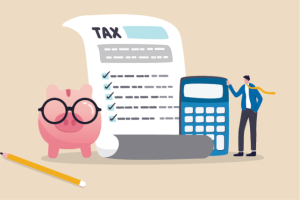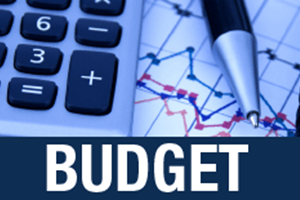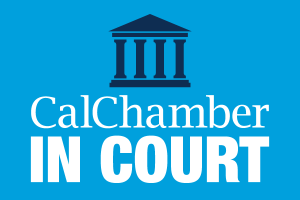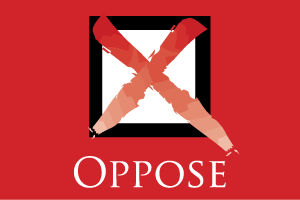Income Taxes
High-Tax California Keeps Increasing Upper Tax Rate
 California is notoriously associated with being a high tax state. During the first year of the 2023–2024 legislative session, California lawmakers proposed a staggering $203.5 billion in new taxes and fees. Additionally, Governor Gavin Newsom signed a budget bill that contained business tax provisions that the Legislative Analyst’s Office estimated would raise $15.9 billion in state revenue from 2024 to 2029.
California is notoriously associated with being a high tax state. During the first year of the 2023–2024 legislative session, California lawmakers proposed a staggering $203.5 billion in new taxes and fees. Additionally, Governor Gavin Newsom signed a budget bill that contained business tax provisions that the Legislative Analyst’s Office estimated would raise $15.9 billion in state revenue from 2024 to 2029.
In 2012, Proposition 30 served as a state revenue raiser when it increased the personal income tax rate. Proposition 55 extended these provisions to 2031, and there is concern that proponents will want to keep the state’s high income taxes in place with yet another proposition extension.
California Is a High Personal Income Tax State
California’s highest-income earners pay the largest share of the state’s personal income tax. In 2019, the top 1% of income earners paid almost 45% of all personal income taxes. In 2012, Proposition 30 increased the personal income tax rate, and in 2015, Proposition 55 extended those provisions to 2031.
With an expiration date looming, there is concern California will, again, push for higher personal income taxes.
Personal Income Tax Rates Will Increase in 2025
California has a graduated income tax rate, and high wage earners have long paid the country’s highest state income tax rate of 13.3%. However, starting on January 1, 2024, that rate increased to 14.4%.
In 2023, California’s state disability insurance program was funded by a payroll tax of 1.1% on wages up to $153,164. In 2024, this wage ceiling was lifted, and all wage income became subject to the payroll tax. The payroll tax expansion increases the state’s top income tax bracket from 13.3% to 14.4%.
California also levies a 1% mental health services tax on income exceeding $1 million. The new total 14.4% tax rate applies to wage income over $1 million.
Efforts to Increase Personal Income Taxes
While state lawmakers have made unsuccessful revenue-raising proposals over the last several years that include wealth taxes and increased personal income tax rates, ballot initiatives have succeeded in this realm.
Proposition 30 in 2012
Proposition 30 was approved by voters in November 2012 and was sponsored by Governor Edmund G. Brown Jr. to address the state’s budget deficit. The Governor highlighted the proposal as a “temporary” tax increase that was necessary to address California’s fiscal crisis.
In combination with the 1% surtax on incomes over $1 million for mental health services, Proposition 30 increased the personal income tax rate to 13.3%. Specifically, Proposition 30 increased the personal income tax:
• For the portion of taxable income between $250,000 (filing single) and $300,000, the tax rate was increased from 9.3% to 10.3%;
• For the portion of taxable income between $300,000 and $500,000, the tax rate is 11.3%; and
• For the taxable income above $500,000, the tax rate is 12.3%.
These income tax increases were made retroactive to January 1, 2012, and were supposed to continue through the end of 2018. Proposition 30 also included a 0.25 percentage point increase in the state sales tax rate for four years, from 2013 through 2016.
According to the nonpartisan Legislative Analyst’s Office (LAO), Proposition 30 on average raises about $6 billion a year from the personal income tax and $1.5 billion annually from the sales tax.
Proposition 55 in 2016
In 2016, voters approved Proposition 55, which extended the provisions under Proposition 30. Specifically, the initiative sought to extend for 12 years, until 2031, the higher personal income tax rates imposed by Proposition 30. Under Proposition 55, the proceeds of the tax increase are deposited in the state’s General Fund, which is used primarily to maintain higher funding for K–14 schools and, to the extent schools and certain other budget priorities are fully funded, provide up to $2 billion for providers of health care services for the Medi-Cal program.
When Proposition 55 was pending, the LAO warned that the precise amount of revenue generated from the initiative would be difficult to predict because it is highly sensitive to the health of the overall state economy and, in particular, to the strength of the stock market and real estate market. The warnings have come to fruition and California’s volatile budget climate has had wild swings between historic surplus and deficit years.
Proposition 55’s Effect on Education Programs
California elected officials responded to the Great Recession in part by reducing per pupil spending by about 20% per pupil, resulting in teacher and support staff layoffs, deferred salary increases and drawing down of reserves. Since the recovery, in large part due to the Proposition 30 taxes, per pupil spending has bounced back to higher levels than before the recession.
Proposition 55 maintained a steady source of higher revenues for public schools and community colleges, enabling overall spending to approach or exceed the national average in per pupil resources. Because this is a volatile revenue source, any downturn in the business cycle affects school spending.
Proposition 55’s Effect on Health Care Programs
Proposition 55 did deviate from Proposition 30 in a few ways, but the most apparent example was how money would be allocated to health care. Under Proposition 55, in certain circumstances, money is dedicated to health care providers for critical, emergency, acute, and preventative services to children and their families and to health plans that contract with the state to provide health benefits to Medi-Cal beneficiaries.
The Medi-Cal program is funded jointly by federal and state governments and has grown rapidly in recent years, covering more than 40% of Californians. This rapid growth is due to new eligibility requirements by the federal government, California’s voluntary expansion of eligibility regardless of immigration status, and pressures from California’s persistently high poverty rate. Because coverage and costs have grown far more rapidly than revenues, the state has responded by maintaining very low provider reimbursements.
California’s 2024–2025 budget for Medi-Cal is estimated to be $161 billion. This rapid growth of the Medi-Cal program has stretched thin the state’s existing network of providers and hospitals. At the same time, lawmakers have not yet reversed all the cuts they made to provider and hospital reimbursement rates during the recession, leaving them among the lowest in the country.
General taxes are not the only source of Medi-Cal revenues. In 2010, the Legislature enacted the Hospital Quality Assurance Fee (HQAF) which, when leveraged with federal matching funds, provides billions of dollars annually to supplement hospital reimbursements, support children’s health care, and provide grants to public hospitals.
Proposition 55 contained a formula that dedicated supplemental revenues to Medi-Cal programs to the extent new revenues from the higher taxes exceeded what was necessary to fully meet the constitutional school finance mandate under Proposition 98 and some other state budget workload benchmarks. Up to $2 billion annually is dedicated to Medi-Cal providers from this tax increase. Any amount earmarked for Medi-Cal is matched by federal funds, effectively doubling its face value. Unlike school funding, however, these funds are not guaranteed.
Additionally, through a quirk in the federal reimbursement formula, any revenues dedicated to hospitals from the Proposition 55 tax increase offset the HQAF described above. This provided a hedge against federal elimination of this revenue source (and concomitant reduction in hospital reimbursements).
CalChamber Position
While California still offers ample economic opportunity, policymakers must remain cognizant and avoid abusing those that provide the state’s General Fund with large contributions. High-wage earners provide a majority of the General Fund with their personal income taxes. The state personal income tax rate has increased to14.4% for earners making more than $1 million, which is by far the highest in the country.
The state must avoid incentivizing a California exodus, driving away large contributors to the state budget. Increasing personal income taxes or imposing additional taxes will further harm California’s economy and depress business growth. The Legislature should avoid imposing new taxes and instead focus on limiting obstacles to the state’s economic growth.
February 2025
Agriculture and Resources
California Environmental Quality Act (CEQA)
Climate Change
Education
Energy
Environmental Regulation
Health Care
Housing and Land Use
Immigration Reform
International Trade
Labor and Employment
Legal Reform
Managing Employees
Privacy
Product Regulation
Taxation/Budget
Tourism
Transportation
Unemployment Insurance/Insurance
Water
Workers’ Compensation
Workplace Safety






